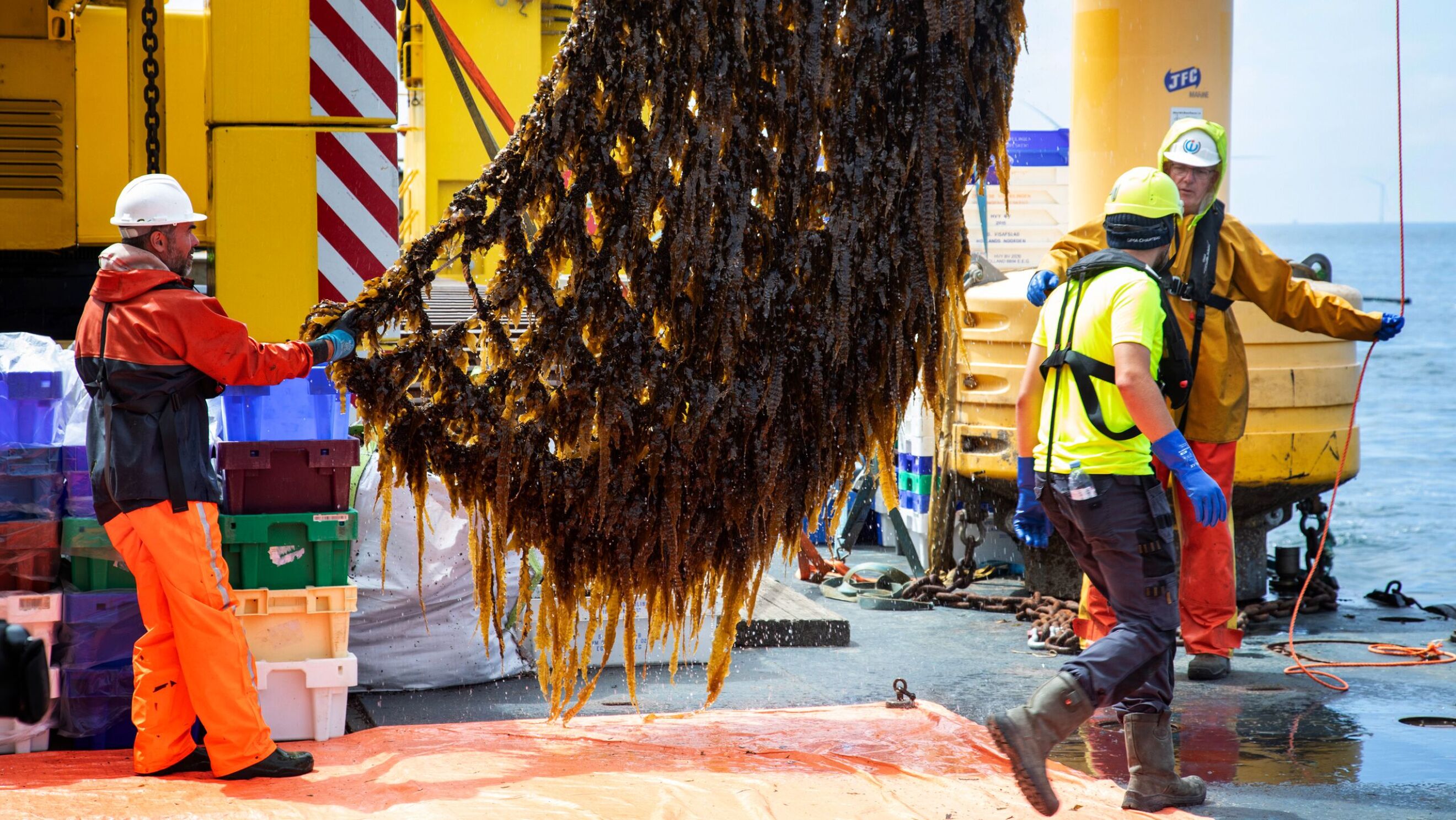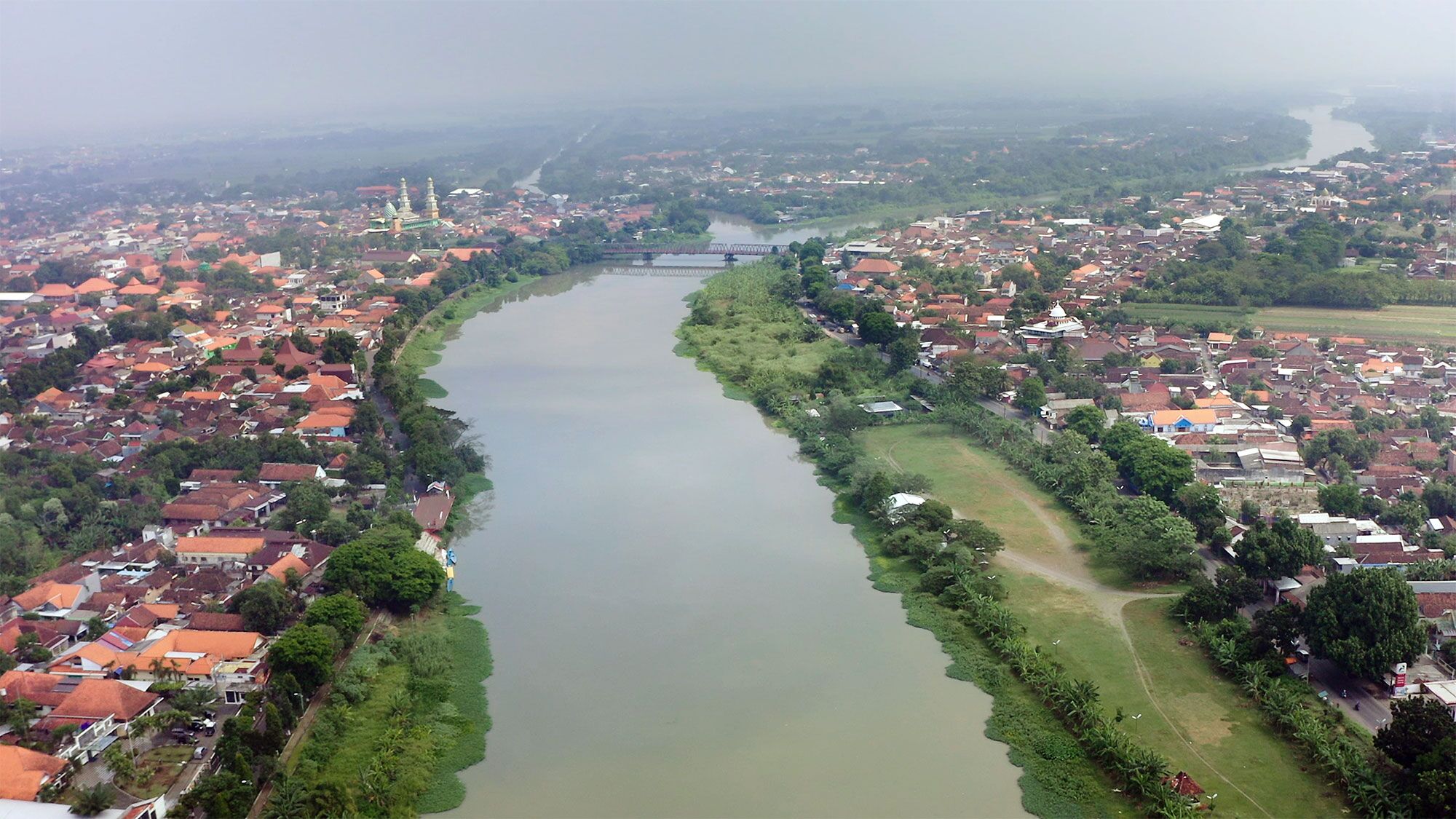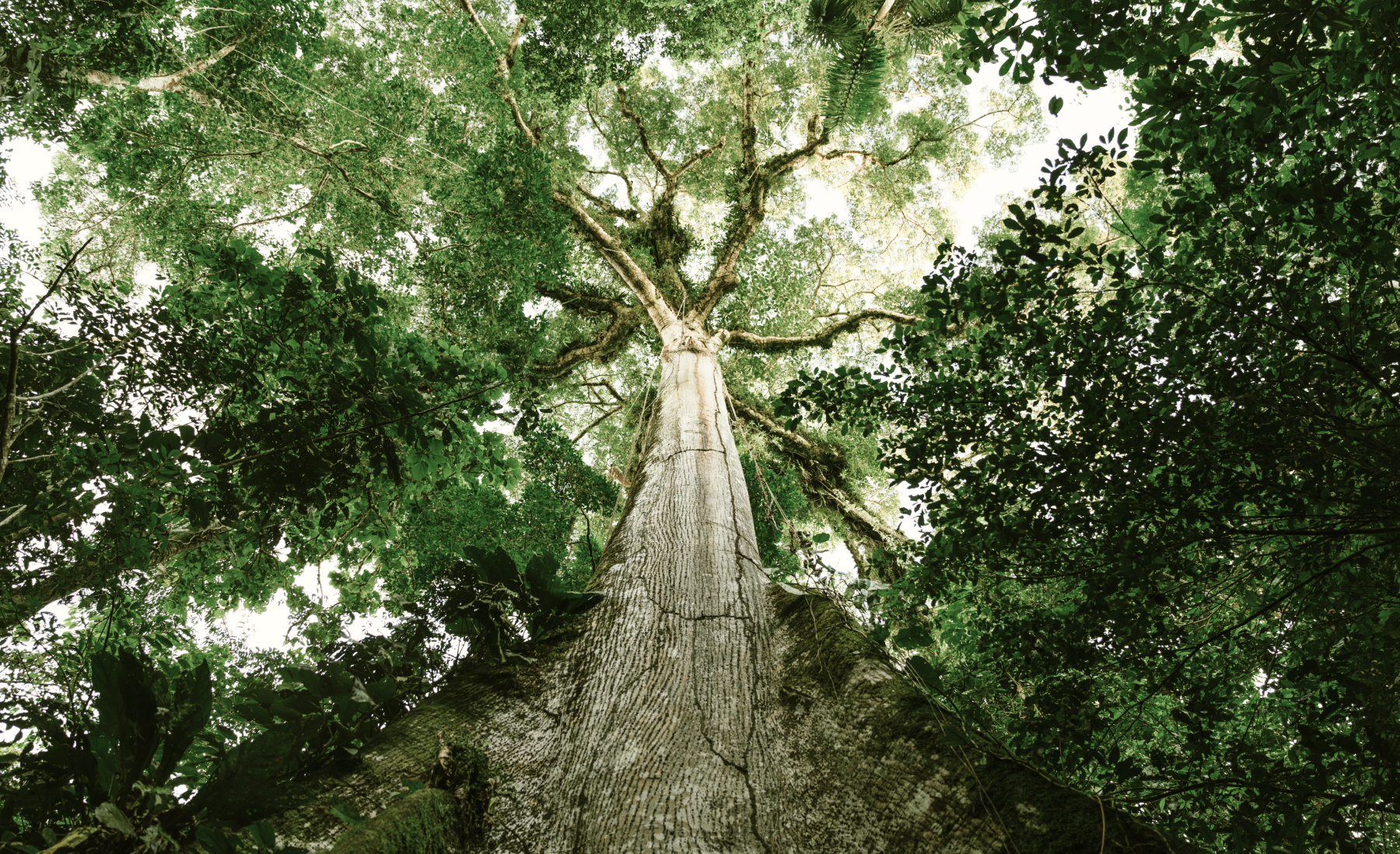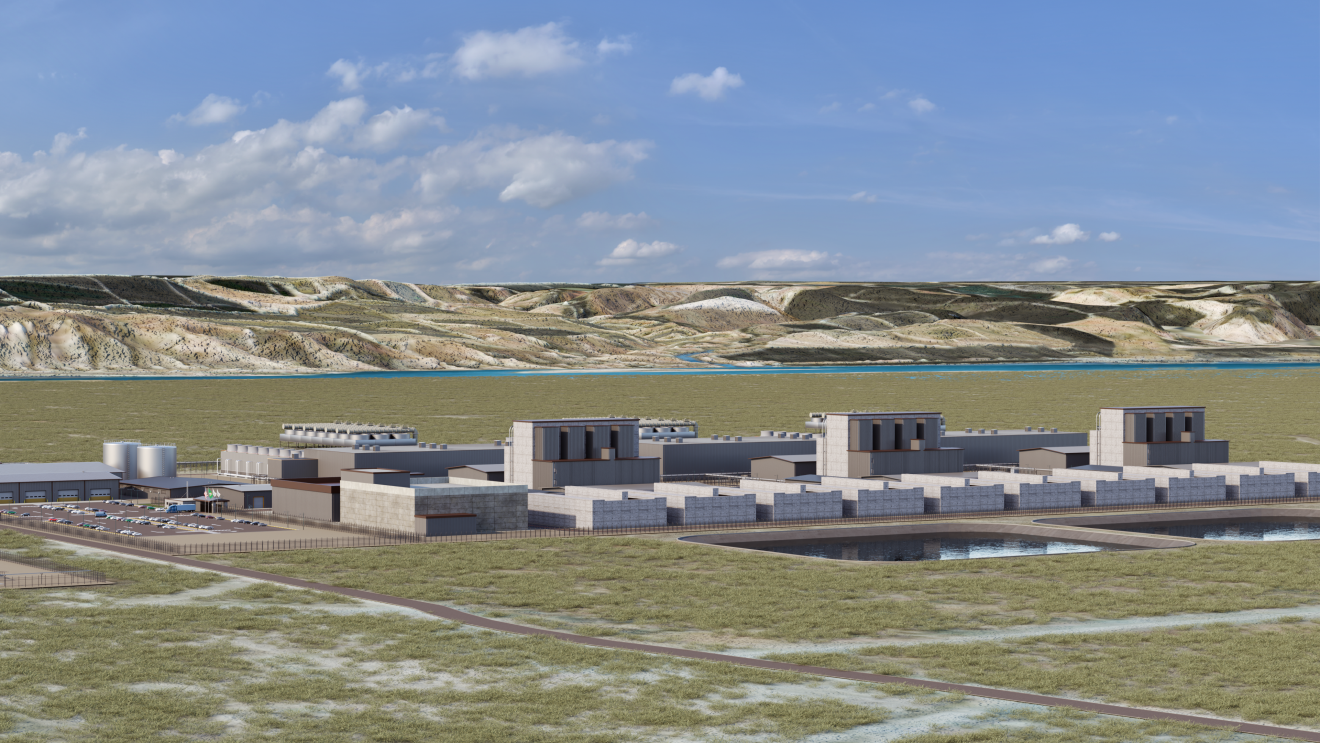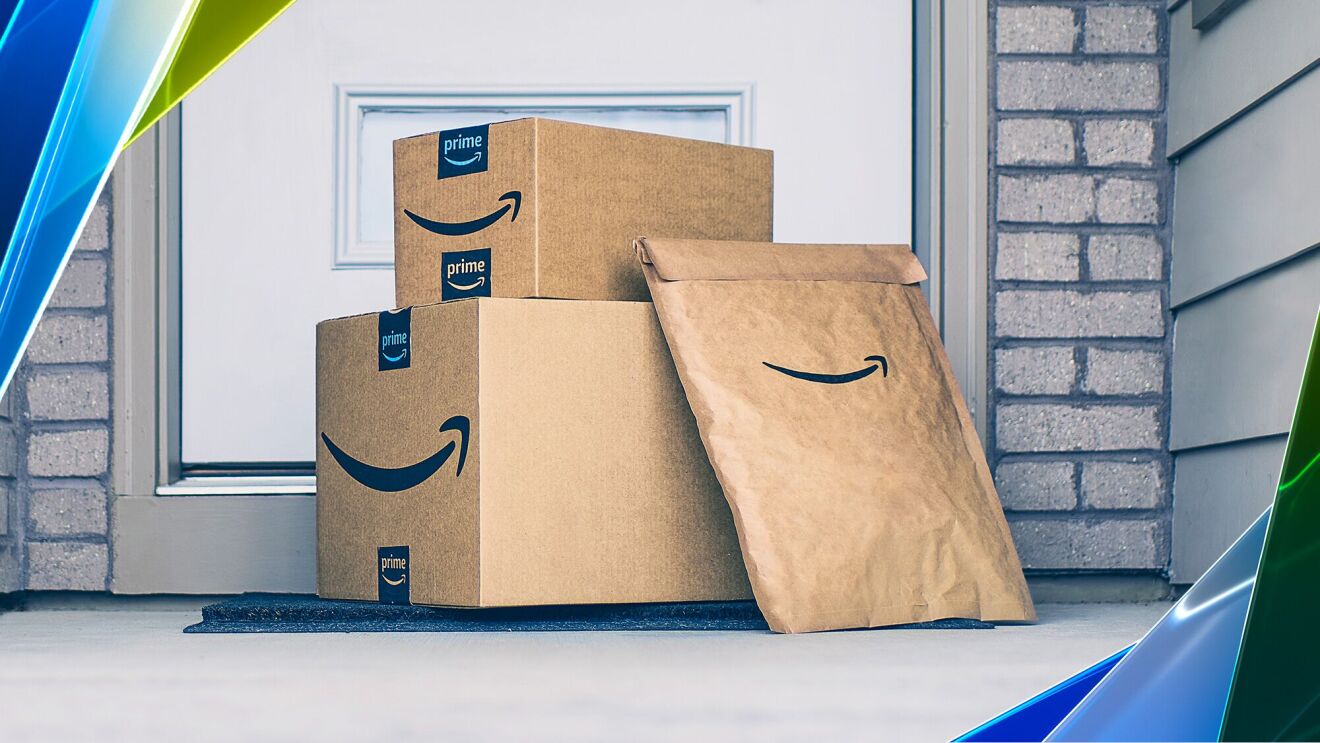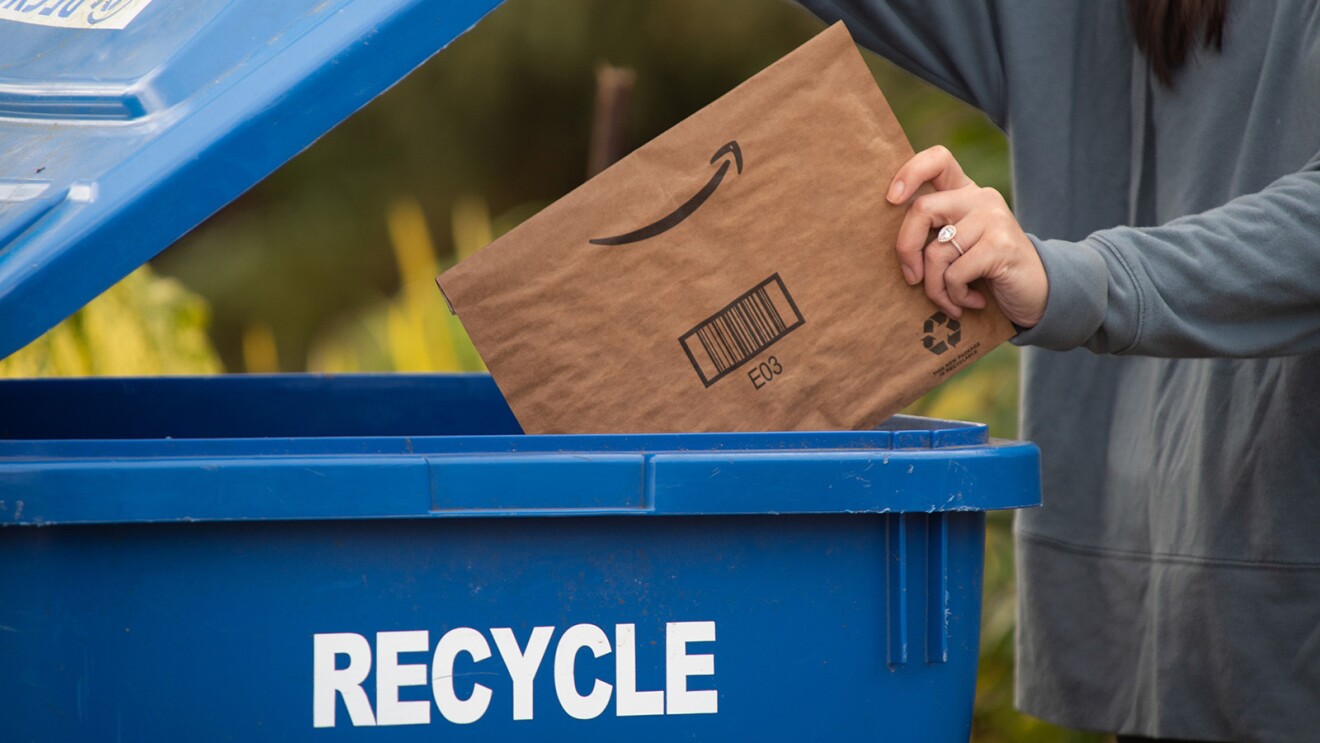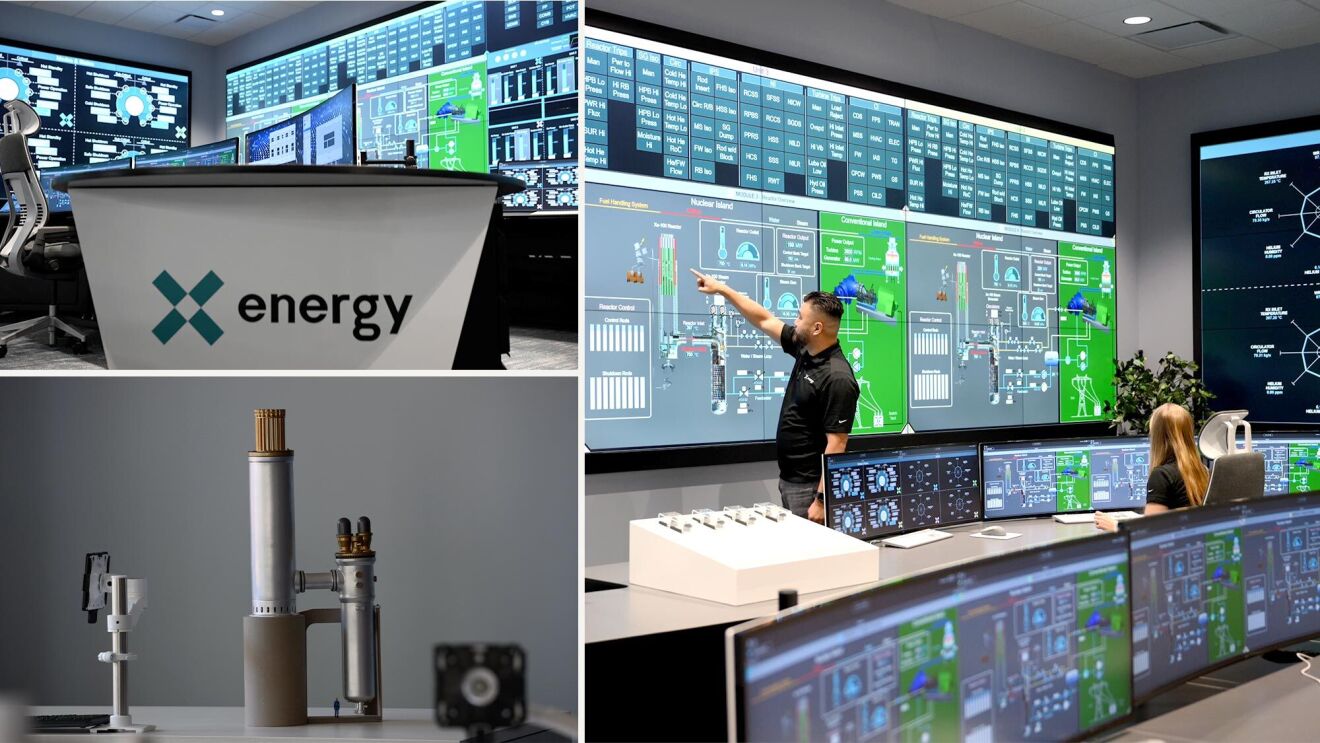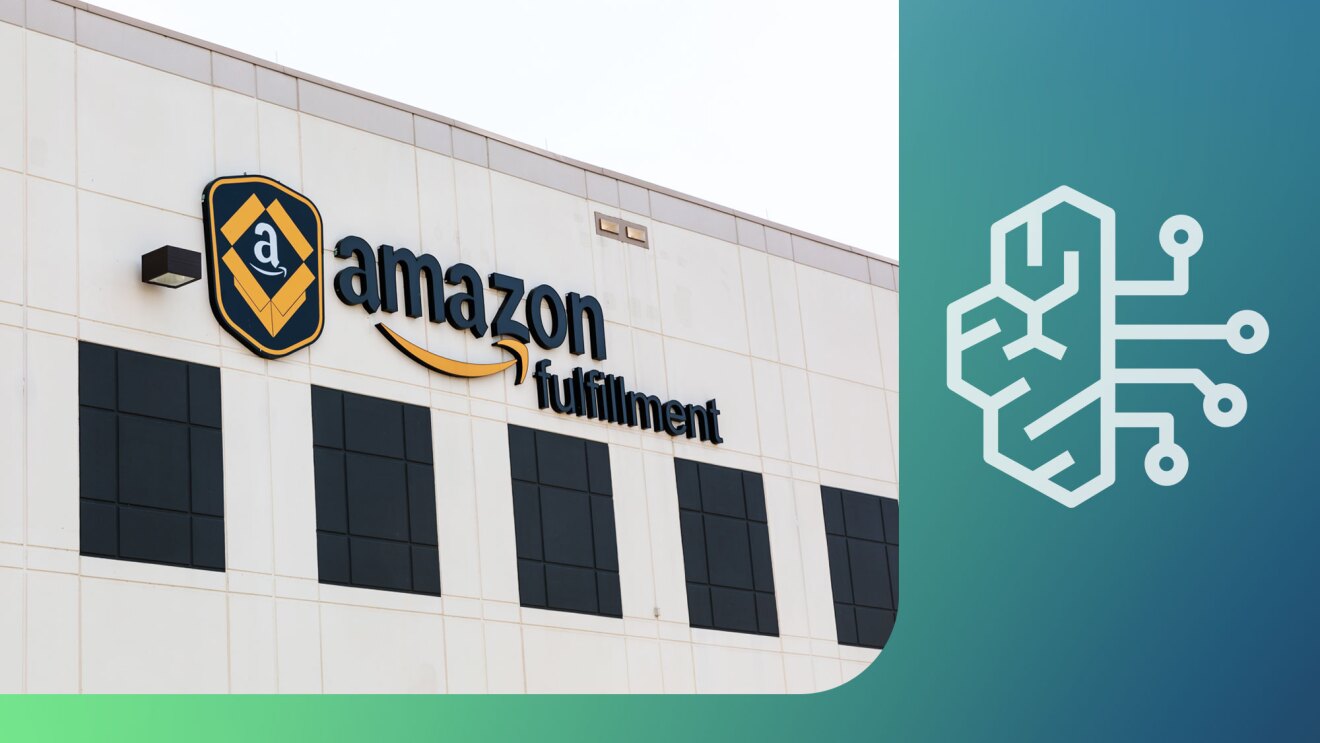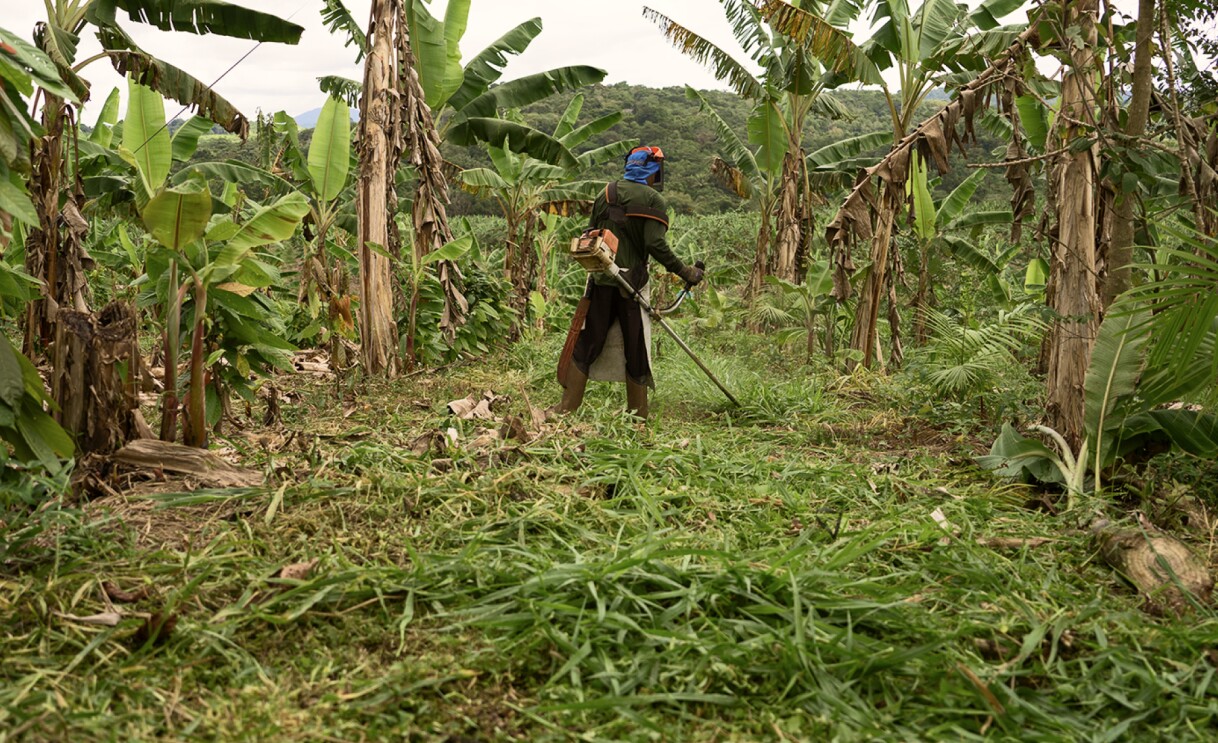Key takeaways
- Amazon's Right Now Climate Fund has enabled the world's first seaweed harvest from an offshore wind farm.
- Seaweed can capture carbon far more efficiently than terrestrial forests and be used to produce food and fabrics.
- This first harvest shows offshore wind infrastructure can do more than produce clean energy.
Off the coast of the Netherlands, in the restless waters of the North Sea, a team of seaweed farmers has made history.
On a clear morning in July, they completed the world’s first harvest of sugar kelp grown between the turbines of a fully operational offshore wind farm. North Sea Farm 1 sits 11 miles off the coast of the Hague inside the Hollandse Kust Zuid wind park, and was developed by the nonprofit North Sea Farmers with €2 million ($2.29 million) in support from Amazon’s Right Now Climate Fund.
The project is the first global effort to use renewable infrastructure not just to generate clean power, but to cultivate a sustainable ocean crop in one of the most regulated marine zones in the world.
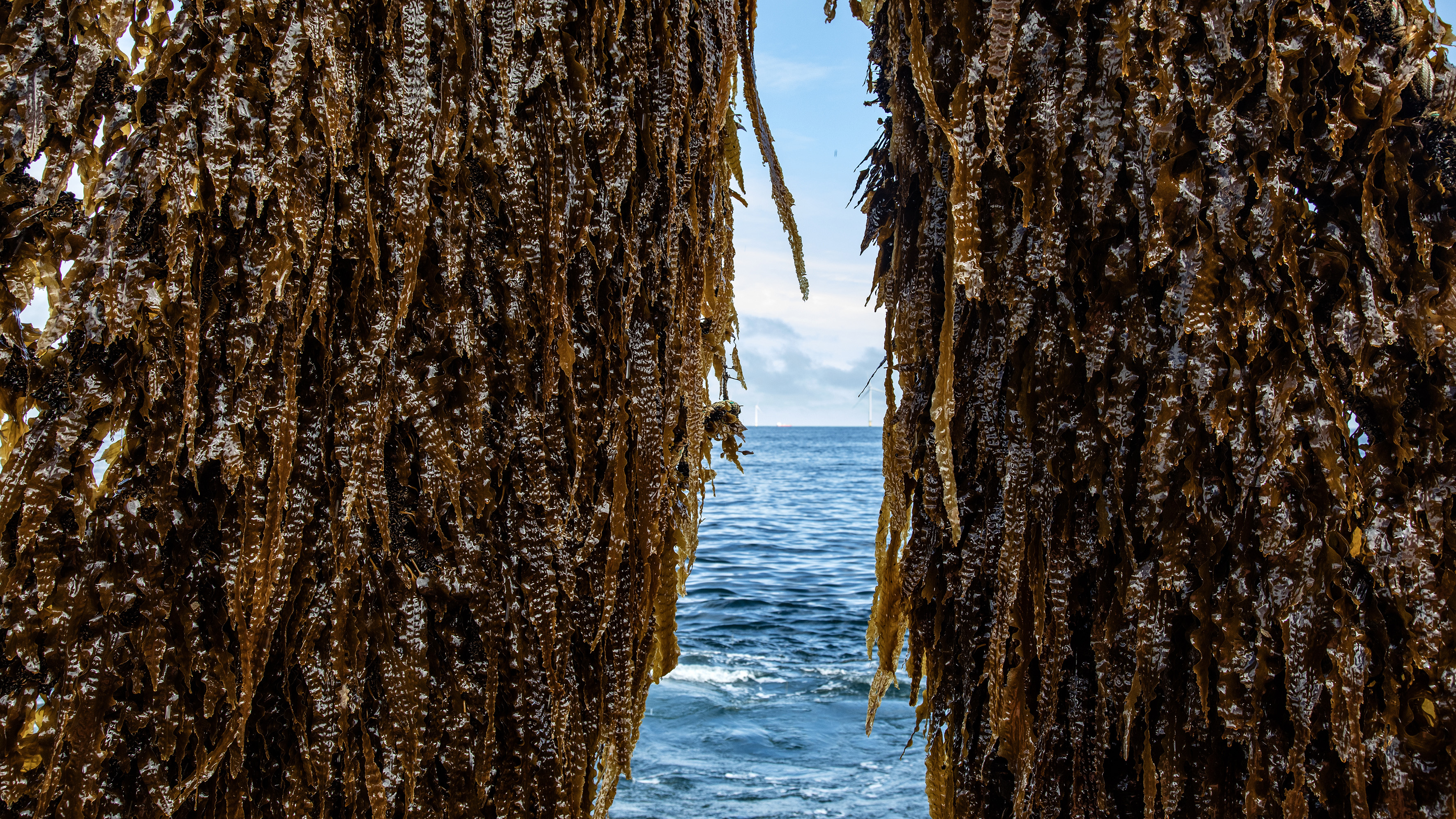 Photo by RENE VAN DER KLOET
Photo by RENE VAN DER KLOETWild seaweed has long been praised for its environmental superpowers. According to the United Nations, it can capture carbon up to 20 times more efficiently per hectare than terrestrial forests while also improving water quality and creating habitats for marine life. It grows quickly, doesn’t require land, freshwater, or fertilizers, and can be turned into everything from food and fabrics to bioplastics and animal feed.
That’s why this harvest is a key milestone in Amazon’s broader commitment to climate innovation and science-backed solutions that benefit both people and the planet.
We created the Right Now Climate Fund in 2019 to support nature-based climate solutions across Europe. It’s a vital tool for searching out and supporting innovative, community-level projects that complement our broader effort to reach net-zero carbon in our operations by 2040. In the past few years, we’ve funded efforts to plant “tiny forests” across Berlin, restore peatland in Ireland, restore UK habitats for declining species like harvest mice and bees, and much more.
The North Sea Farmers team has spent nearly a decade preparing for its first harvest milestone. “From the first tests with a small buoy in 2014, we’ve now arrived at starting large-scale seaweed production in wind farms,” said Eef Brouwers, the nonprofit’s managing director. “This is a crucial step to demonstrate the scale-up potential of the European seaweed industry—and the benefits it could bring for marine ecosystems and climate resilience.”
Here's a look at how the historic harvest happened.
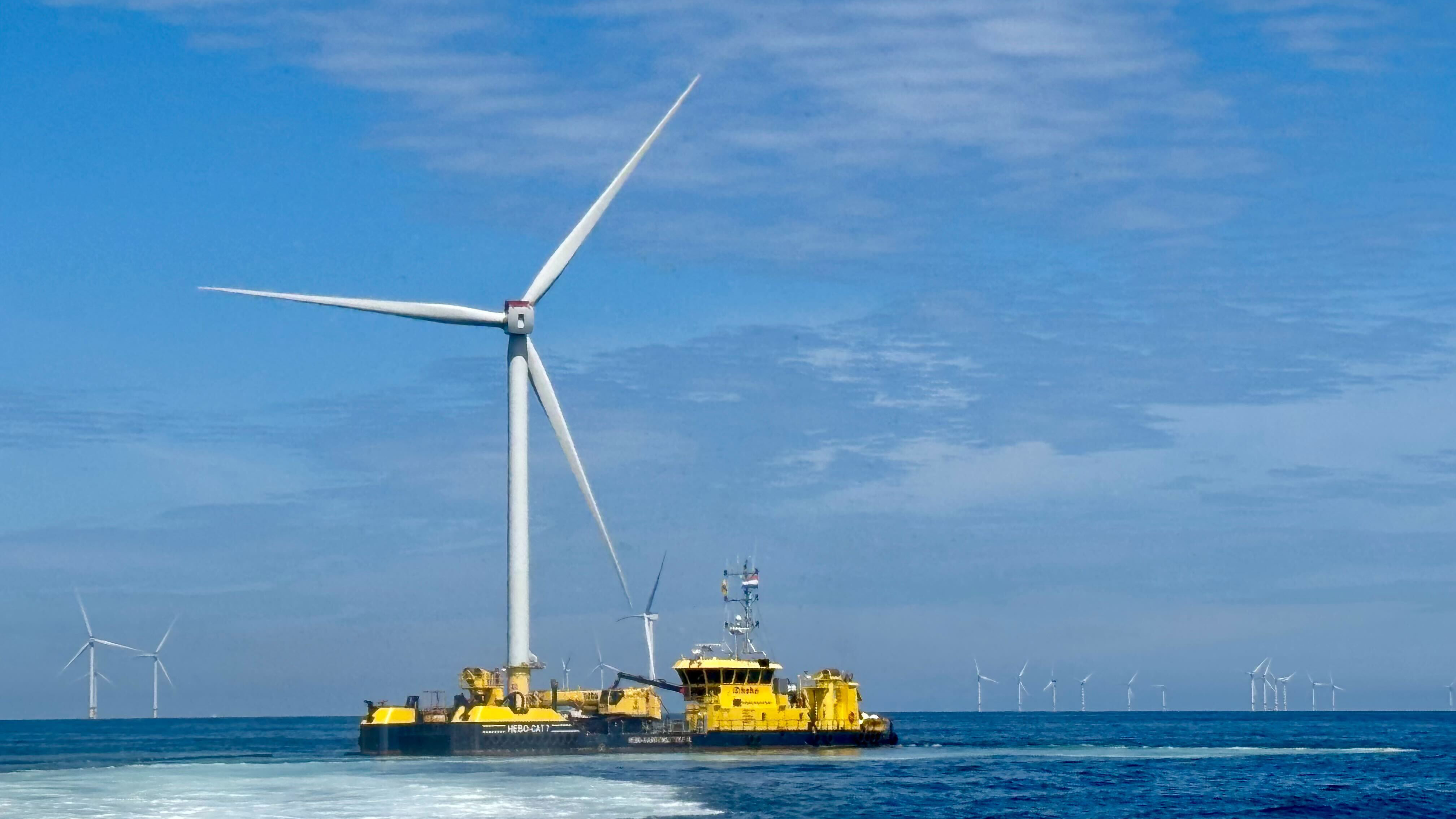 Photo by RENE VAN DER KLOET
Photo by RENE VAN DER KLOETHeading out
The seaweed farmers operate with specialized equipment and cranes to maintain the farming infrastructure in the exposed offshore environment. The farm spans 12 acres and utilizes the space between wind turbines, which are typically restricted from maritime traffic.
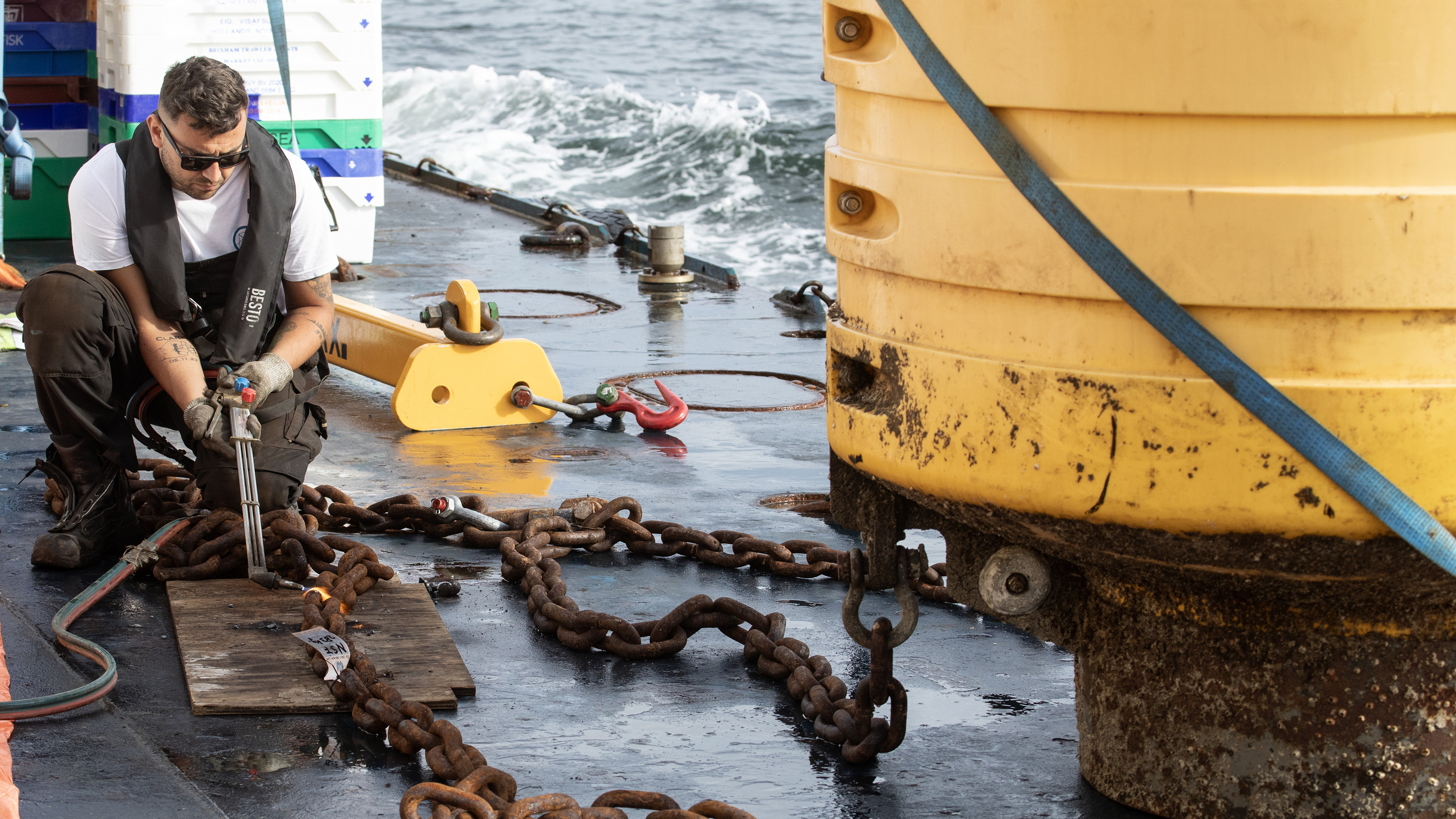 Photo by RENE VAN DER KLOET
Photo by RENE VAN DER KLOETCustom equipment in action
Safety is always paramount as teams in high-visibility gear conduct complex operations at sea. The vessel had to be carefully equipped to handle long seaweed nets and hoist heavy lines in offshore conditions.
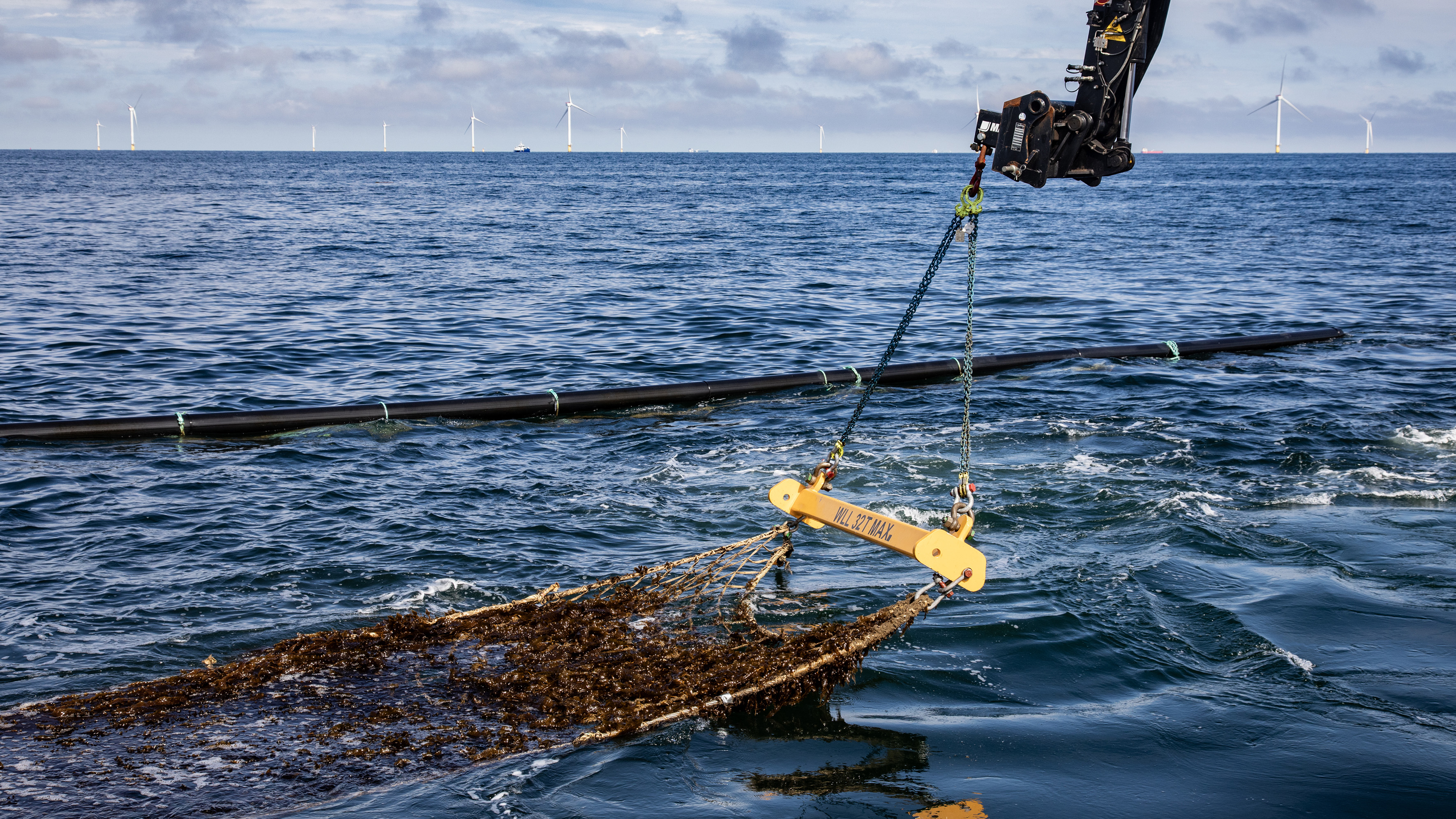 Photo by RENE VAN DER KLOET
Photo by RENE VAN DER KLOETPrecision navigation between turbines
Navigating through a maze of towering turbines, the crew guided the vessel with steady precision. The tight spacing demanded focus to maneuver safely without disrupting the offshore infrastructure.
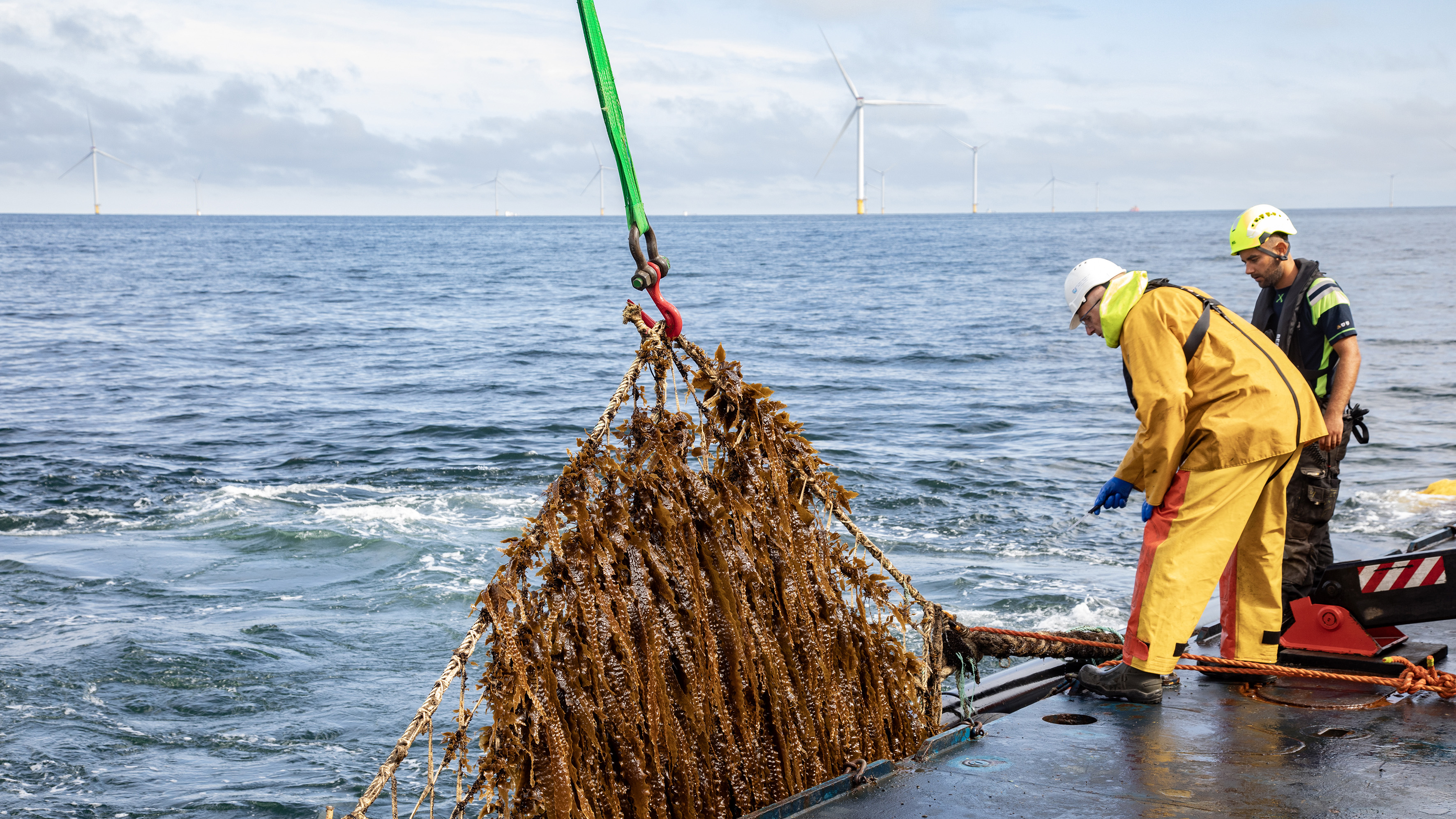 Photo by RENE VAN DER KLOET
Photo by RENE VAN DER KLOETA light touch
The harvest used custom-designed tools to gently lift mature seaweed from the nets, minimizing disruption. Each net measured around 164 by 10 feet and held a dense tangle of kelp nurtured over nine months.
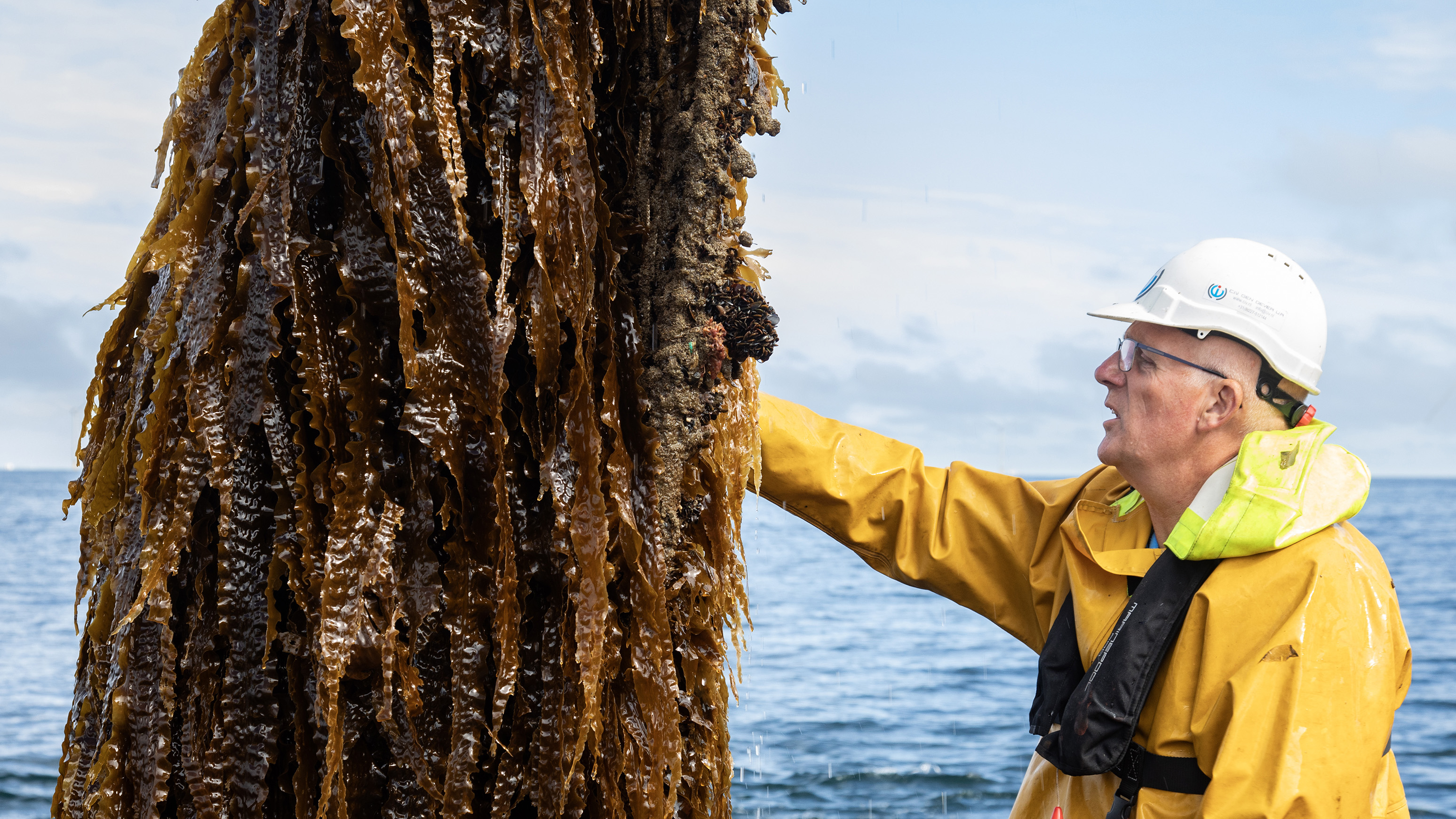 Photo by RENE VAN DER KLOET
Photo by RENE VAN DER KLOETComing up
Seaweed emerged from below the surface, golden and thick with growth. Farmers in protective gear carefully guided the lines and examined the harvest. Scientists are now studying what happens beneath the surface—where parts of the seaweed fall to the seafloor, potentially capturing carbon and creating new microhabitats.
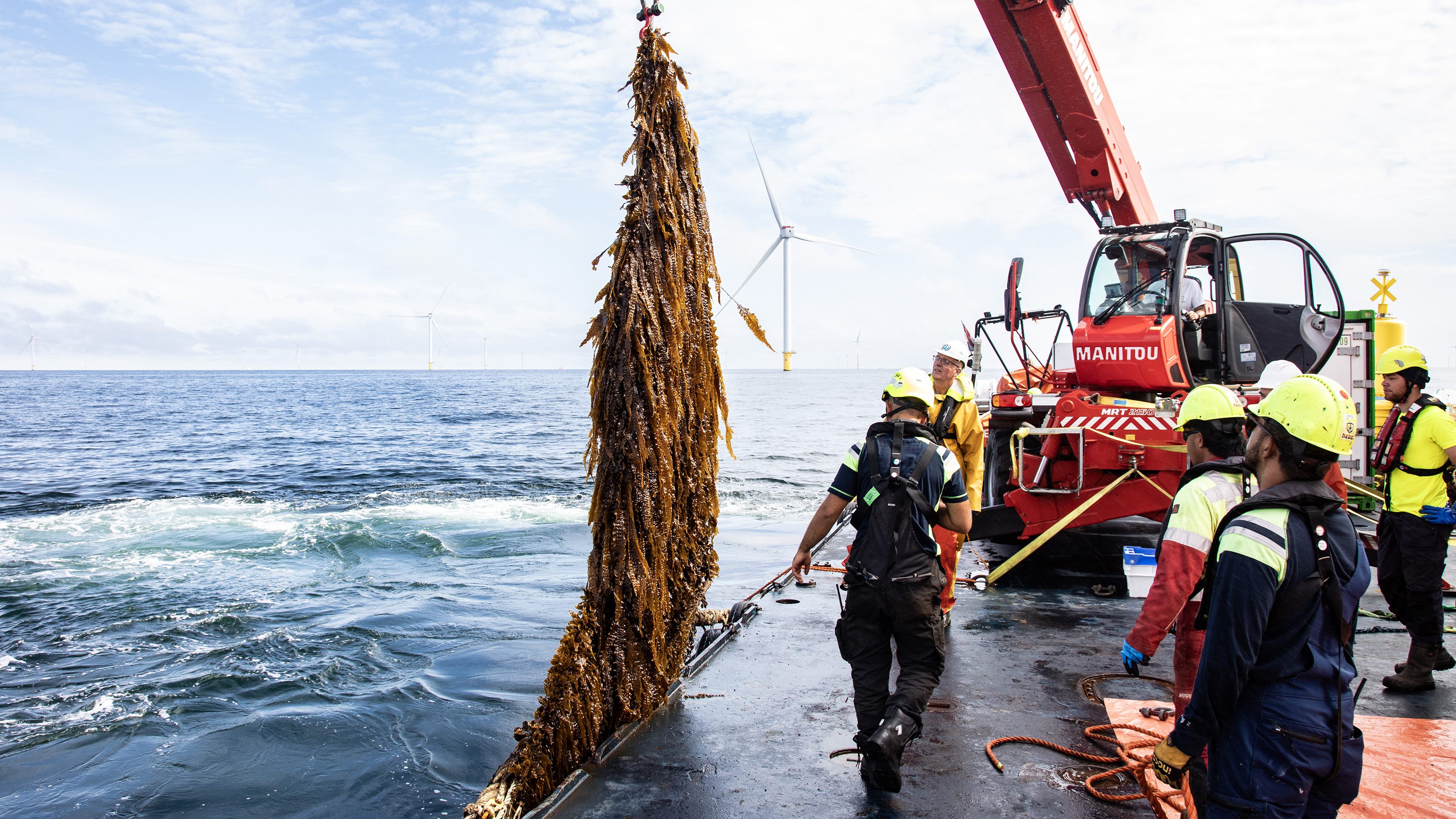 Photo by RENE VAN DER KLOET
Photo by RENE VAN DER KLOETTeamwork at sea
Careful coordination helped the team lift and secure large frond-filled bundles, which were later guided to the deck. More than just a successful operation, for the crew this harvest signified the first tangible milestone, after years of collaboration between climate research and marine farming.
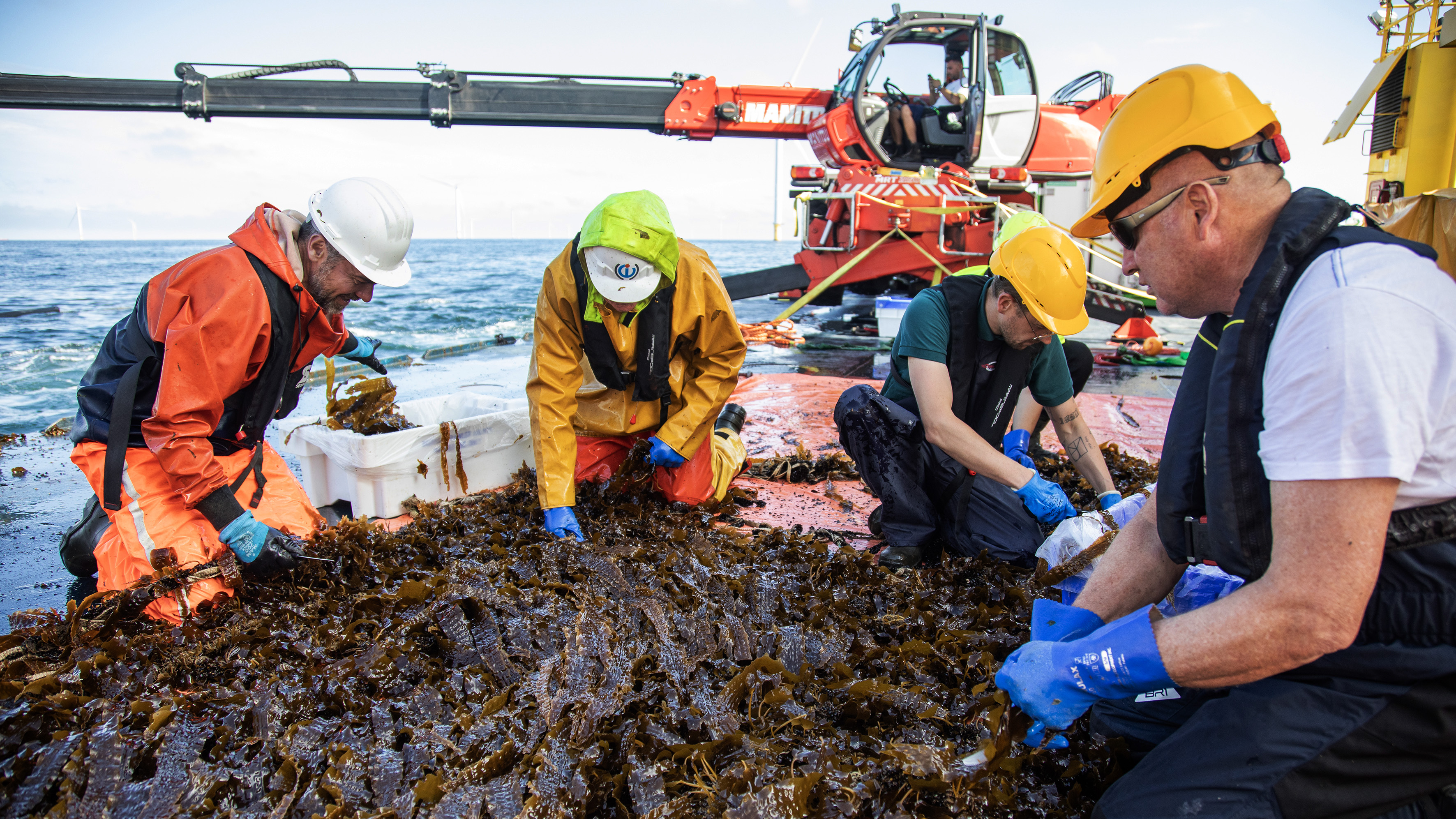 Photo by RENE VAN DER KLOET
Photo by RENE VAN DER KLOETBringing it home
With the turbines behind them, crew members worked through each net with focus, harvesting by hand. From here, the kelp can be delivered to shore and turned into textiles, food ingredients, wellness products, and more.
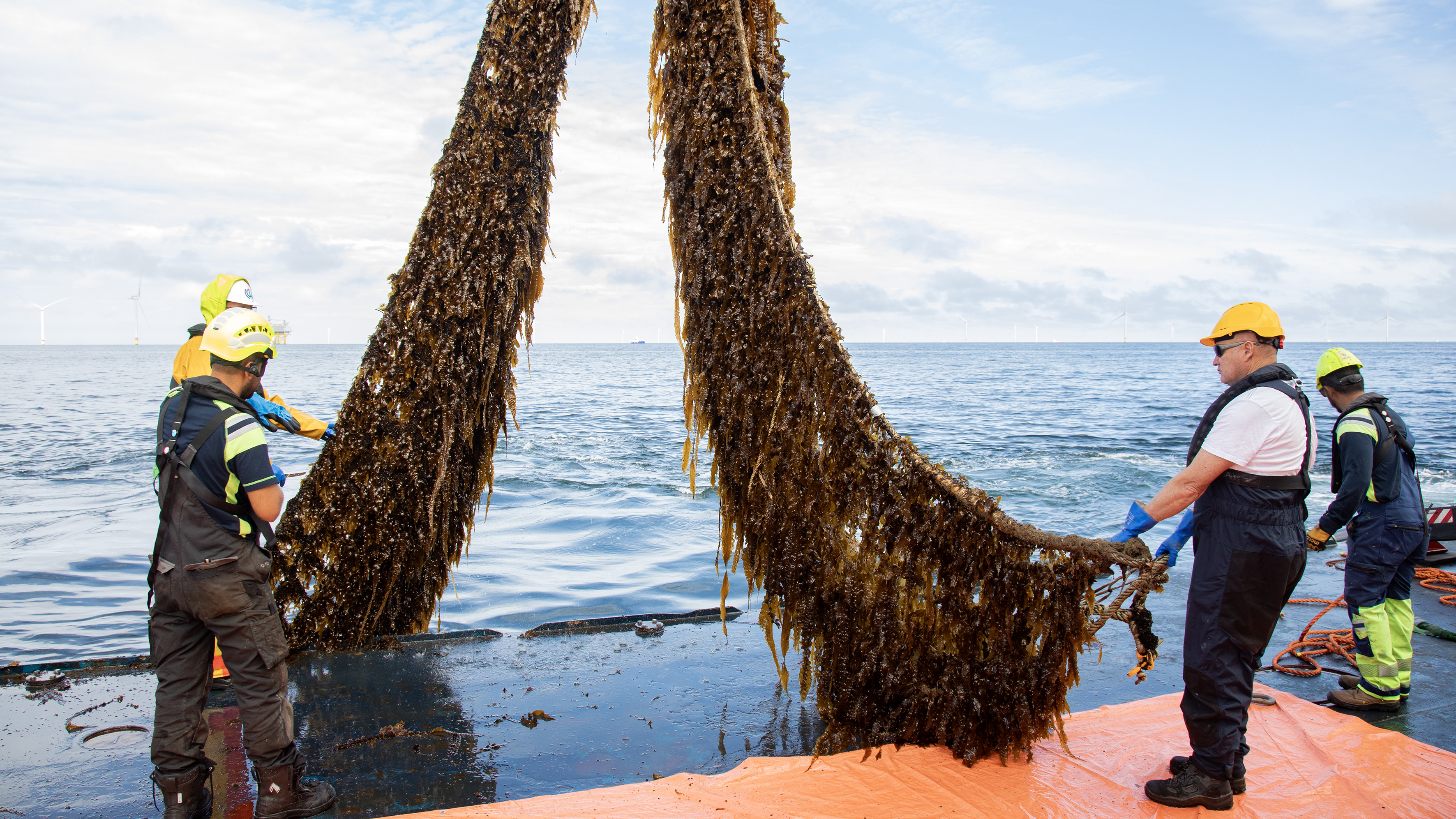 Photo by RENE VAN DER KLOET
Photo by RENE VAN DER KLOETLooking down
Researchers from Plymouth Marine Laboratory, the Dutch hydraulic institute Deltares, and Silvestrum Climate Associates will now analyze the harvest to collect environmental data. They are monitoring growth, carbon uptake, water quality, and local biodiversity using satellite feeds, seabed sampling, and eDNA analysis. Seaweed extract manufacturer Algaia, project developer Simply Blue Group, and maritime contractors Van Oord and Doggerland Offshore are also part of the North Sea Farm 1 consortium, gaining insights from the harvest.
Their research will determine whether offshore seaweed farms like this one could scale globally, based on understanding the impacts of North Sea 1 on marine ecosystems, potential carbon sequestration, and biodiversity.
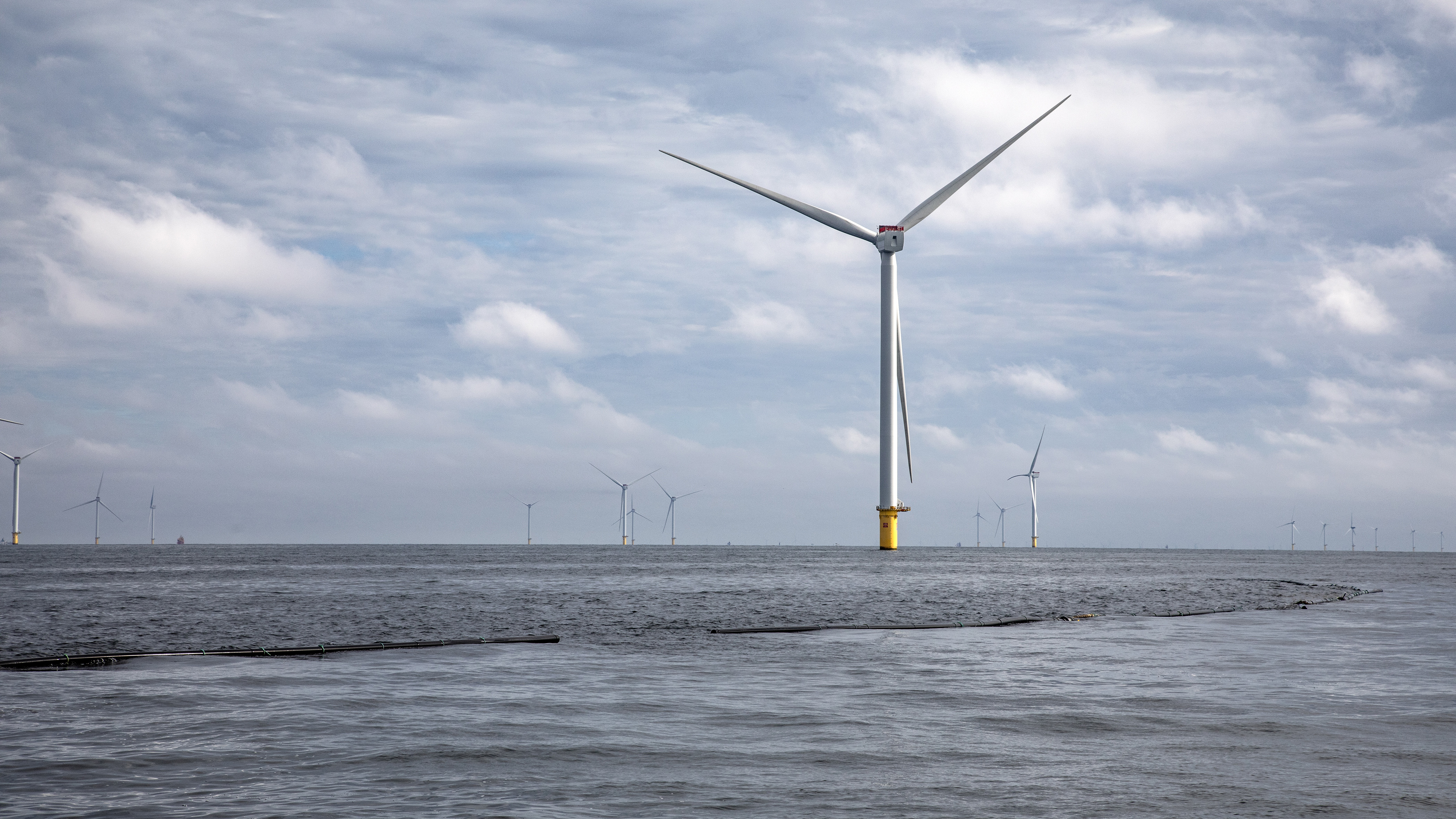 Photo by RENE VAN DER KLOET
Photo by RENE VAN DER KLOETLooking ahead
The first harvest at North Sea Farm 1 is a powerful proof of concept: Offshore wind infrastructure can do more than produce clean energy. It could also be a turning point for seaweed growth and research in Europe and help us better understand its role in tackling climate change.
Together with pioneers like North Sea Farmers, Amazon is supporting new ways to restore nature, capture carbon, and promote biodiversity. This is just the beginning.
Learn more at sustainability.aboutamazon.com
Trending news and stories
